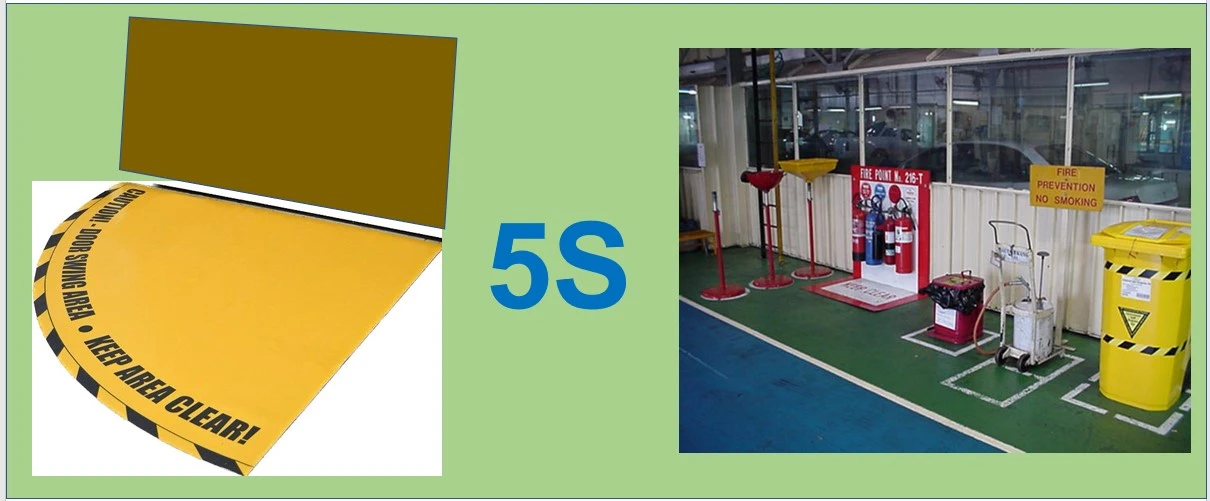12 Tools for Lean Management

WHAT IS LEAN MANAGEMENT OR LEAN MANUFACTURING:
Lean Management is a business methodology that’s designed to increase quality and efficiency by eliminating wasted resources like time, money, and effort. It also is sometimes referred to as lean production or lean manufacturing. The idea is to produce only the best and most valuable services or products for customers and clients at the right price.
Let’s see more in detail :
- Lean Management was founded by Japanese car maker Toyota in the late 1940s with the intention of ELIMINATING procedures that did not IMPROVE the final product.
- By doing this, the leaders were able to significantly enhance PROFITBILITY, CYCLE TIME, PRODUCTIVITY, and EFFICIENCY.
- Lean thinking has extended to several industries with considerable influence, and it has developed into the several principles of Lean management
- John Krafcik, who served as CEO of Google’s self-driving car project, Waymo, from 2015 to 2021, first used the term “Lean” in his 1988 article, “Triumph of the Lean Production System.”
- The Lean Management was initially adopted by small automobile manufacturer that eventually became successful on a global scale, it is business, and operational process quickly caught on. Other companies soon began to adopt similar methodologies with the hope of achieving the same level of success. Today, Lean Management is widely used by leading businesses around the world, including GM, Ford, GE, Intel, John Deere, and Nike.
SOME ADVANTAGES OF LEAN MANUFACTURING
Implementing Lean Management techniques has numerous advantages for Shop managers, including:
- FOCUS: You may cut waste by using the Lean methodology. As a result, your personnel will concentrate on tasks that are truly valuable.
- INCREASE PRODUCTIVITY & EFFICIENCY: Employees who concentrate on adding value will be more productive and efficient since they won’t be side-tracked by perplexing duties
- PROCESS IMPROVEMENT: A better use of resources is possible when production is based on actual demand. This allows you to employ only the resources that are required and prevents waste.
Because of this, your business will be considerably more adaptable and able to meet customer expectations much faster.
GENERAL TOOLS OF LEAN MANUFACTURING
Lean tools are often described as learning and experimentation solutions. Staff adopt them and collaborate in a process of continuous improvement.
There are a multiple of tools available, but here are a few examples:
[1]. 5’S’ Methods : 5’S’ is a system for organizing spaces so work can be performed efficiently, effectively, and safely. This system focuses on putting everything where it belongs and keeping the workplace clean, which makes it easier for people to do their jobs without wasting time or risking injury.
- Seiri (organization)
- Seiton (order)
- Seiso (cleanliness)
- Seiketsu (standardization)
- Shitsuke (discipline)
It focused (Clear, tidy, clean, order and be rigorous workplace) to optimize the working environment and reduce wasted time
[2]. Six Sigma : It is a method to improve the quality and efficiency of processes. Six Sigma is a process that makes use of statistics and data analysis to analyze and reduce errors or defects. In this process, the purpose is to improve cycle times while reducing manufacturing defects to no more than 3.4 defects per million units or events.
5 Lean Six Sigma Principles
- Work for the customer. The primary goal of any change you want to implement should be to deliver maximum benefit to the customer. …
- Find your problem and focus on it
- Remove variation and bottlenecks
- Communicate clearly and train team members
- Be flexible and responsive.
[3]. Visual Management : Get Information and solve problems accordingly. Visual management is a form of communication used to give a snapshot of manufacturing operations. The goal of visual management is to translate shop floor processes and production statuses into easy-to-understand visual overviews.
[4]. Kaizen : Method to continuously improve processes. Kaizen is a Japanese term meaning change for the better or continuous improvement. It is a Japanese business philosophy that concerns the processes that continuously improve operations and involve all employees. Kaizen sees improvement in productivity as a gradual and methodical process.Single Minutes Exchange of Die
[5]. SMED (Single-Minute Exchange of Die) : is a system for dramatically reducing the time it takes to complete equipment changeovers. The essence of the SMED system is to convert as many changeover steps as possible to “external” (performed while the equipment is running), and to simplify and streamline the remaining steps. The name Single-Minute Exchange of Die comes from the goal of reducing changeover times to the “single” digits (i.e., less than 10 minutes).
(SMED) : method to reduce the series change time.
[6]. Kanban : Method to optimise inventory management. Kanban is an inventory control system used in just-in-time (JIT) manufacturing. It was developed by Taiichi Ohno, an industrial engineer at Toyota, and takes its name from the coloured cards that track production and order new shipments of parts or materials as they run out. Kanban is a Japanese word that directly translates to “visual card”, so the Kanban system simply means to use visual cues to prompt the action needed to keep a process flowing.
Benefits of KANBAN
- Kanban (Japanese for sign) is an inventory control system used in just-in-time (JIT) manufacturing to track production and order new shipments of parts and materials.
- Kanban also strives to limit bottlenecks by promoting communication and information sharing between individuals and departments.
- Successful implementation of Kanban may lead to reduced expenses, greater customer satisfaction, more efficient processes, and minimized risk due to unforeseen problems.
- Kanban was developed by Taiichi Ohno, an industrial engineer at Toyota, and uses visual cues to prompt the action needed to keep a process flowing.
- One of the main goals of Kanban is to limit the build-up of excess inventory at any point on the production line.
- Establishing Pull : Create a flow in which there are just enough materials and resources to create the required products on time and in a continuous fashion
[7]. Value Stream Mapping (VSM) : method to analyse processes and identify obstacles.
- Value stream mapping (sometimes called VSM) is a lean manufacturing technique to analyze, design, and manage the flow of materials and information required to bring a product to a customer. Also known as “material and information-flow mapping”, it uses a system of standard symbols to depict various work streams and information flows. Items are mapped as adding value or not adding value from the customer’s standpoint, with the purpose of rooting out items that don’t add value.
- Value stream mapping can be used to improve any process where there are repeatable steps – and especially when there are multiple handoffs. In manufacturing, handoffs are easier to visualize because they usually involve the handoff of a tangible deliverable through stations. If, for example, a problem arises when assembling a vehicle, line workers can see the physical parts accumulating and jamming up a certain part of the assembly line. They can then stop the line to solve that problem and get the process flowing again.
- The application of value stream mapping – also referred to as “visualizing” or “mapping” a process – isn’t limited to the assembly line. Lean value stream mapping has gained momentum in knowledge work because it results in better team communication and more effective collaboration.
Also known as error-proofing, poka-yoke is a method for taking steps to mistake proof a process. It is a foundational tool of both Lean, which targets waste, and Six Sigma, which focuses on defects, with a goal of eliminating every mistake by creating systems that either immediately prevent or detect them.
[8]. Mistake OR ERROR Proofing : it is Japanese equivalent poka-yoke (pronounced PO-ka yo-KAY), is the use of any automatic device or method that either makes it impossible for an error to occur or makes the error immediately obvious once it has occurred. It is a common process analysis tool.
[9]. Takt Time : Takt time, or simply Takt, is a manufacturing term to describe the required product assembly duration that is needed to match the demand. Often confused with cycle time, takt time is a tool used to design work and it measures the average time interval between the start of production of one unit and the start of production of the next unit when items are produced sequentially. For calculations, it is the time to produce parts divided by the number of parts demanded in that time interval. The takt time is based on customer demand; if a process or a production line are unable to produce at takt time, either demand levelling, additional resources, or process re-engineering is needed to ensure on-time delivery.
For example, if the customer demand is 10 units per week, then, given a 40-hour workweek and steady flow through the production line, the average duration between production starts should be 4 hours, ideally. This interval is further reduced to account for things like machine downtime and scheduled employee breaks.
[10]. Continuous Process Flow: is a Lean approach whose main idea is to produce and move one item at a time continuously through a series of steps instead of moving them into batches. As a result, you will be able to deliver value more frequently to your customers. The idea of continuous flow is to produce only what has been requested.
[11]. Heijunka: Levelling/creating balance”. The principles of Heijunka are intended to reduce a process’s unevenness and minimize the risk of overburdening. In Japanese, the term Heijunka means “Companies can use it to react to changes in demand and optimize their capacity utilization.
Implementing Heijunka having following benefits.
- Reducing inventory costs.
- Avoiding overproduction.
- Preventing teams from overburdening.
- Producing and delivering value to your customer at a steady pace.
- Building a balanced pull system running at optimal efficiency.
[12]. Just-in-time production (JIT) is a Lean term representing a simple inventory system that produces goods or services only when there is a demand for them. The JIT principle is the backbone of the Toyota Production System (TPS) and Lean Management. Implementing a just-in-time workflow ensures that the attention is focused on the work in progress and waste is eliminated from the process.
Benefits of Just-In-Time?
- Just-in-time production impacts organizations by strengthening their market competitiveness. Here is a list of the Lean philosophy’s most underlined benefits.
- Reduces inventory costs.
- Helps to reduce waste from the process and eliminates non-value-adding activities.
- JIT improves both products and processes by creating a smooth workflow.
________________ XXXXX ________________
Note: Above views are purely written based on my own individual experience through various industries & based on that above points have been came out. Also gone through various books & Reference sites before conclude. Hence before implementing, pls. review & decide whether it suits/align to your requirements or not.







